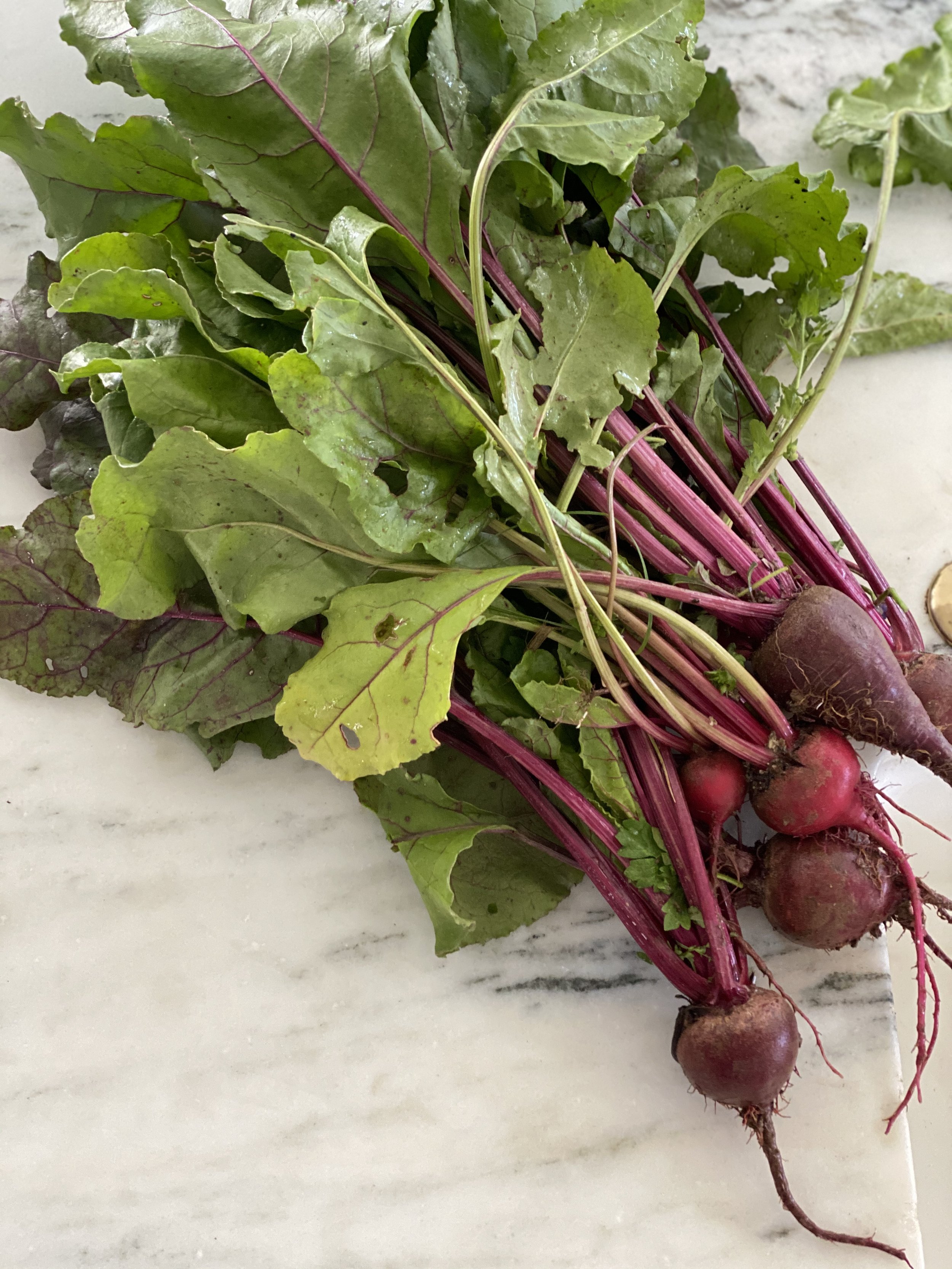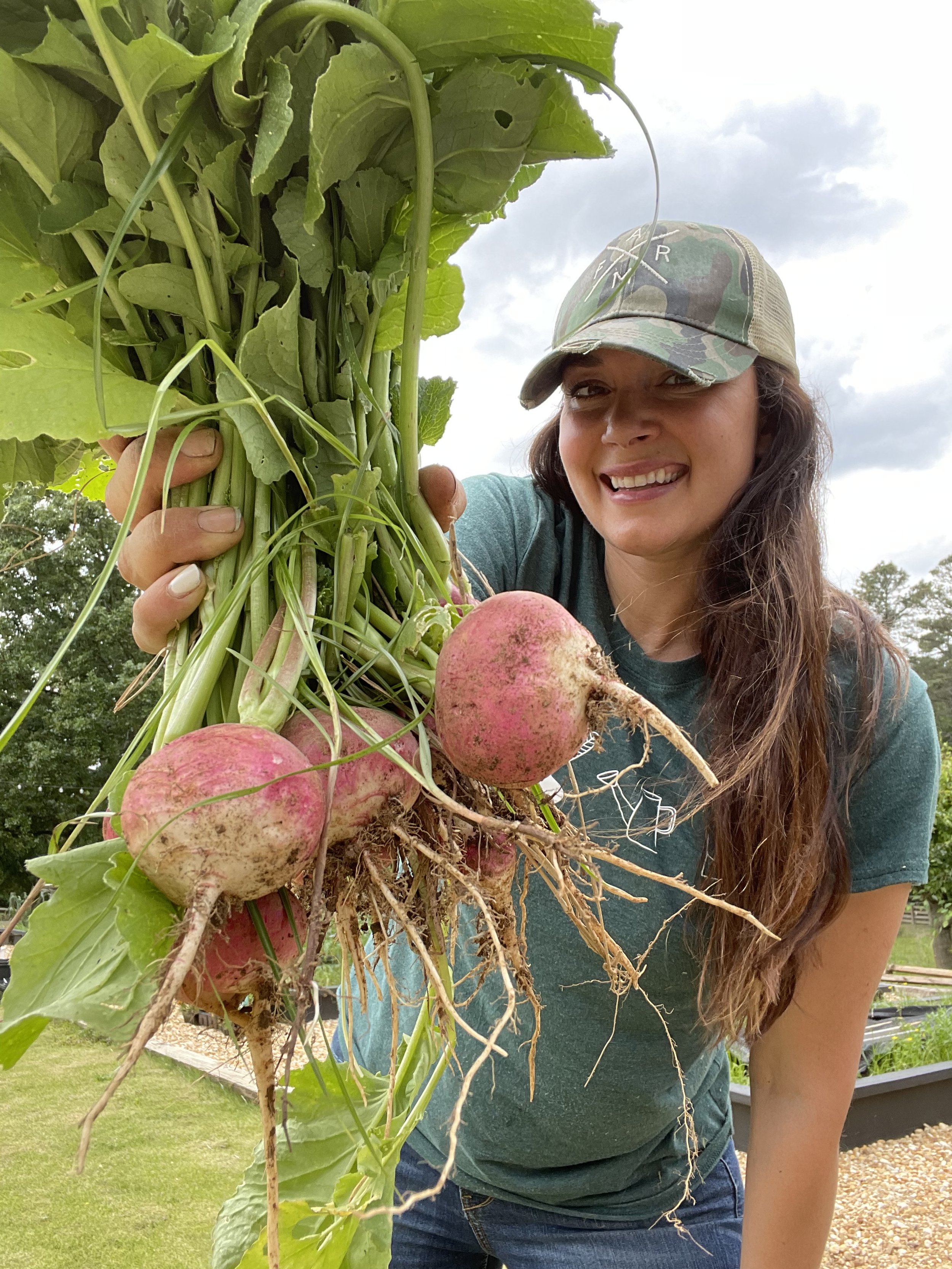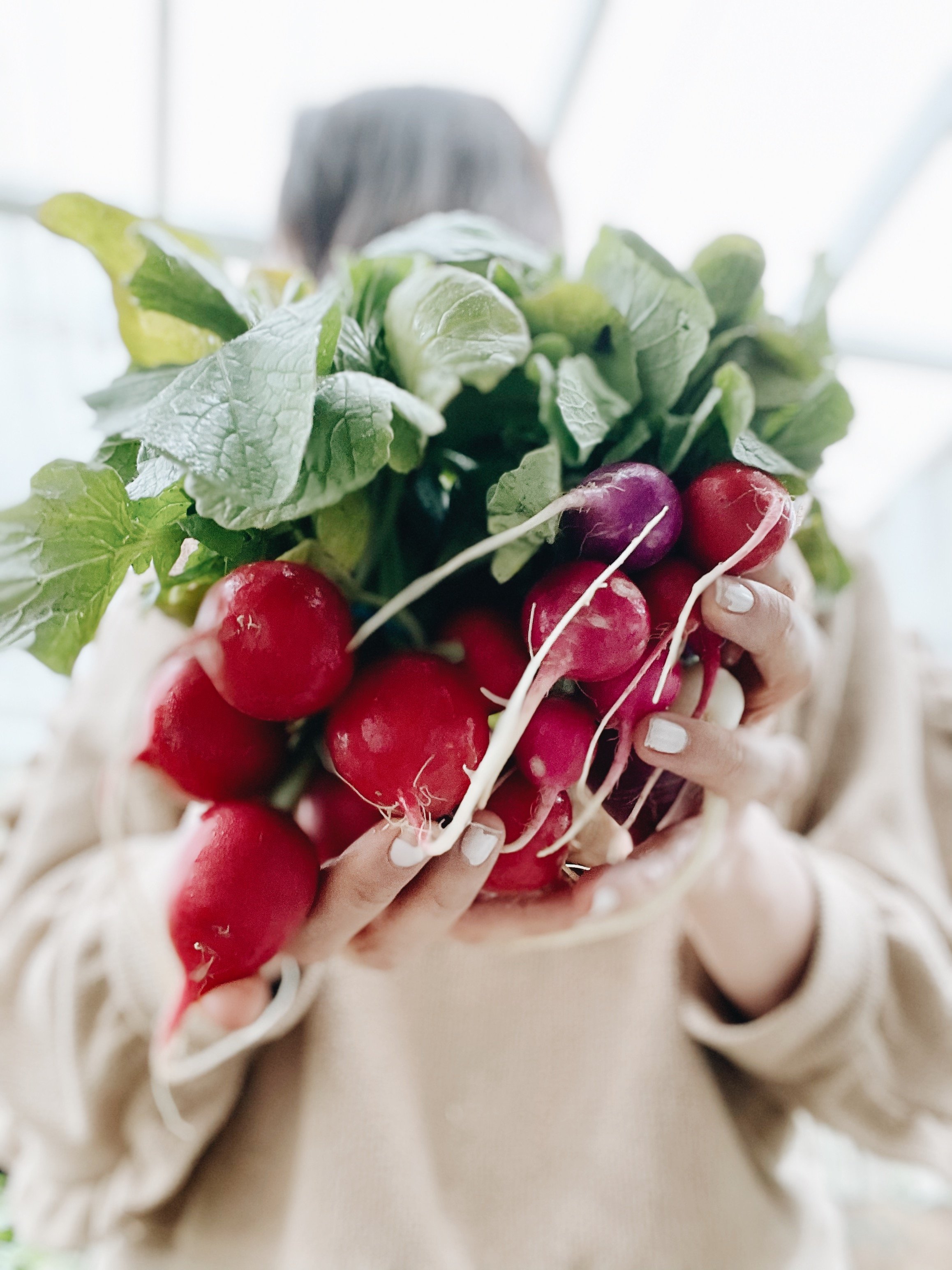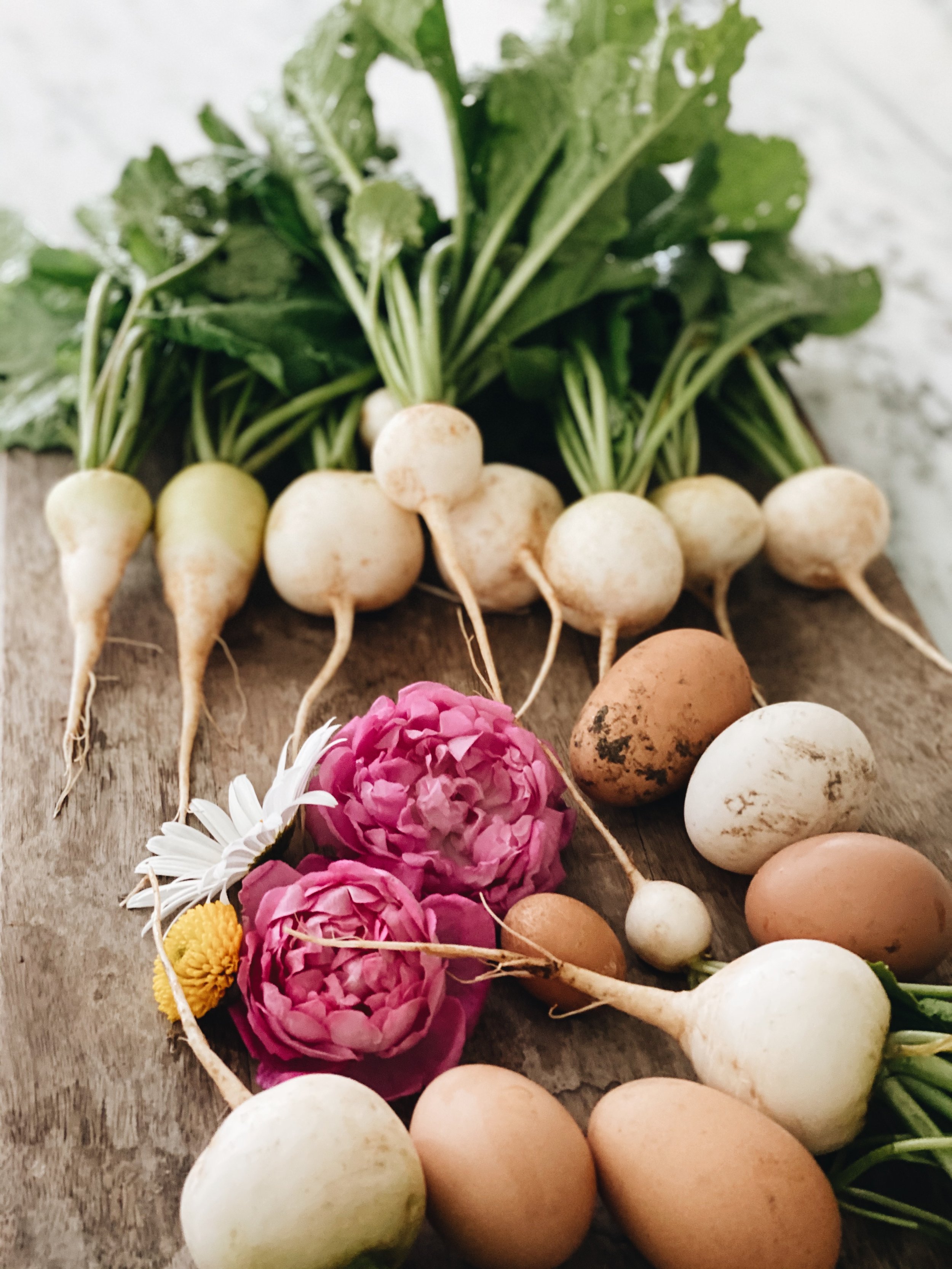Tips For Growing Root Vegetables Successfully!
Let’s talk about growing root vegetables!
So often, the focus is on typical veggies like tomatoes, cucumbers, greens, brassicas, etc., that these underground treasures are forgotten.
With their beautiful shapes, striking colors, earthy flavors, and nutrition content, they are indeed treasures.
I don’t know about you, but I find a bunch of yellow carrots or radishes with their pink and purple hues just as exciting and beautiful as a bunch of flowers!
And here’s the best part, friend: they are fairly straightforward to grow. Ravishing radishes and cute carrots are just a few steps away!
So, grab your gardening gloves, and let's dive deep into the world of carrots, beets, radishes, turnips, sweet potatoes, and more!
Index:
A growing guide to the most common root vegetables: Beets, carrots, parsnips, potatoes, radishes, sweet potatoes, and turnips
What are root vegetables?
Root vegetables are, you guessed it, veggies that grow underground. They are underground wonders waiting to be unearthed!
These plants store essential nutrients in their roots, making them delicious and highly nutritious. And they often have the most striking colors! From carrots and beets to radishes and turnips, there is something for everyone.
Types of Root Vegetables
Let's take a closer look at the different types of root vegetables and how they grow:
Stem tubers and root tubers
These underground vegetables stockpile nutrients for winter or dry months. They include familiar favorites like potatoes, yams, and sweet potatoes. They thrive in damp, loose soil with good drainage and can be grown in various containers, from garden beds to grow bags.
Rhizomes
Rhizomes, also called creeping rootstalks, are underground stems that produce runner stems horizontally along the soil surface. Think ginger, turmeric, and bamboo. Raised beds are ideal for growing rhizomes, preventing their runner stems from spreading into other crops.
Taproots
Taproots have a thick top that tapers to a point at the bottom. Carrots, beets, and turnips are examples of this category. For optimal growth, taproots prefer loose, rock-free soil.
Bulbs
Bulbs, such as onions, garlic, and leeks, are not often thought of as root vegetables, and some may disagree :-) However, they consist of layered segments and grow just beneath the soil surface, making them technically "root vegetables." They require well-drained soil and plenty of space to thrive.
Corms
Corms, like arrowhead, taro, and water chestnuts, store nutrients underground to survive dry and cold seasons. They're similar to bulbs but have their own unique characteristics.
when should you plant root vegetables?
Timing is key when it comes to planting root vegetables. Most varieties prefer cool weather for germination and growth.
Depending on your local climate, aim to plant them in early spring, or late summer to early fall.
Be sure to check the specific planting guidelines for each type of root vegetable to ensure optimal growth.
Here's a general guideline for when to plant some common root vegetables:
Spring Planting
Many root vegetables can be planted in early spring as soon as the soil can be worked. This includes crops like carrots, radishes, turnips, and beets.
These vegetables prefer cooler temperatures for germination and early growth. Potatoes and parsnips are also typically planted in early spring, just before the last frost date.
Late Spring to Early Summer
Sweet potatoes require warm soil to thrive. They are usually planted in late spring or early summer once the soil has warmed up. Sweet potatoes need a long growing season, so they are usually harvested in late summer to early fall.
Late Summer to Early Fall
Some root vegetables, such as carrots, beets, and parsnips, can also be planted in late summer for a fall harvest.
Planting them in late summer allows them to mature in cooler weather, which can result in sweeter, tastier roots.
how do you plant root vegetables?
Planting root vegetables is relatively straightforward, but there are a few tips to keep in mind for success:
Prepare the soil
Start by preparing the soil in your garden bed. Root crops prefer loose, well-drained soil with plenty of organic matter, like compost or well-aged manure.
Remove any weeds, rocks, or debris from the planting area. Work the soil with a garden fork or tiller to loosen it to a depth of at least 6-8 inches.
Read more: How to make the best organic garden soil for vegetables
Planting Depth
Different root crops have different planting depths, so it's essential to follow the specific guidelines for each crop.
As a general rule of thumb, smaller seeds should be planted shallower, while larger seeds can be planted deeper. Depending on the crop, planting depth can typically range from 1/4 inch to 1 inch deep.
Spacing
Proper spacing is crucial for root crops to allow enough room for the roots to develop and expand. Refer to the planting instructions provided on seed packets or plant labels for the recommended spacing for each crop.
In general, smaller root crops like radishes may require spacing of 1-2 inches between plants, while larger crops like carrots may need spacing of 2-4 inches or more.
Sow seeds
Plant seeds directly into the garden beds according to the recommended planting depth and spacing.
You can scatter smaller seeds thinly across the soil surface and then cover them lightly with soil. For larger seeds, plant them individually at the proper depth. Space seeds evenly to ensure uniform growth and prevent overcrowding.
Water regularly
After planting, water the soil thoroughly to ensure good seed-to-soil contact and promote germination. Keep the soil moist but not waterlogged during the germination and early growth stages.
Once the plants are established, water deeply and infrequently to encourage deep root growth.
Thinning
Once the seedlings emerge and grow, thin them out to the proper spacing recommended for each crop. This gives the remaining plants enough space to develop healthy roots and produce larger yields.
Use scissors or small shears to snip off the excess seedlings at ground level, being careful not to disturb the roots of the remaining plants.
Mulch
Consider applying a layer of organic mulch, such as straw or shredded leaves, around the base of the plants to help conserve moisture, suppress weeds, and regulate soil temperature.
Mulching also helps protect delicate roots from damage and promotes overall plant health.
Maintenance
Throughout the growing season, monitor the plants for signs of pests, diseases, or nutrient deficiencies.
Certain root vegetables are heavy feeders, so fertilize them as needed based on soil test results and plant growth.
Harvest the root crops when they reach maturity; you will find more info below!
growing root vegetables in containers
You can absolutely grow root vegetables in containers or pots!
Root vegetables like carrots, turnips, beets, parsnips, potatoes, onions, radishes, rutabagas, and turnips are ideal for container planting.
While some root crops, like carrots and parsnips, prefer deep soil for their roots to develop and mature fully, you can still grow them and enjoy their mini versions!
Here are some tips for growing root vegetables in containers or pots:
Container Size
Choose containers deep enough to accommodate the root depth of the specific crop you're growing. Larger root vegetables like potatoes and sweet potatoes require larger containers with a depth of at least 12-18 inches.
Smaller root vegetables like radishes and beets can be grown in shallower containers, but they still require enough room for their roots to develop.
Soil
Use a high-quality potting mix or container soil that is loose, well-draining, and rich in organic matter. Avoid using garden soil, as it may become compacted in containers and hinder root growth.
You can also amend the potting mix with compost or aged manure to provide additional nutrients for the plants.
Drainage
Ensure your containers have adequate drainage holes at the bottom to prevent waterlogging and root rot. Elevating the containers on pot feet or placing them on a saucer with gravel can help improve drainage.
Sunlight
Place your containers in a location that receives full sunlight for at least 6-8 hours daily. Most root vegetables require ample sunlight to grow and develop properly.
Watering
Keep the soil evenly moist but not waterlogged. Check the moisture level regularly and water whenever the top inch of soil feels dry to the touch. Avoid overwatering, as it can lead to root rot and other problems.
Fertilizing
Container-grown plants may require more frequent fertilization than those grown in the ground. Use a balanced, water-soluble fertilizer or organic fertilizer according to the manufacturer's instructions.
Avoid over-fertilizing, as it can cause excessive foliage growth at the expense of root development.
Read more: The best vegetables to grow indoors
a growing guide to the most common root vegetables
Now that we've covered the basics, let's explore some of the most popular root vegetables and how to grow them:
Beets
Beets are easy to grow from seed and prefer cool weather but still full sun. Sow them in early spring so they can benefit from both the cooler temps and sunlight for the best color and flavor.
Sow seeds directly into the soil and thin them as needed for proper root development.
Depending on the variety, beets are typically ready for harvest 55 to 70 days after planting. However, you can harvest beets at any growth stage, from baby beets to mature roots. For larger, mature beets, allow them to reach their full size before harvesting.
Carrots
Carrots thrive in loose, well-drained soil and prefer cool temperatures. They will grow well in full to partial sun.
Sow seeds directly into the soil where you plan to grow them, as they do not do well with transplanting.
A key to growing carrots is to ensure you thin them out when they sprout. The seeds are very tiny and if you pack them in too densely there won’t be enough room for growth. .Be sure to thin them so there is about a singer width space between them to allow them to grow.
Keep them moist until they germinate and thin seedlings to ensure proper spacing.
Depending on the variety, carrots are typically ready for harvest 60 to 80 days after planting. However, you can harvest carrots at any stage, from baby carrots to mature roots. For larger, mature carrots, allow them to reach their full size before harvesting.
But I must say, the smaller the carrot, the better its flavor!
Another pro of carrots is that if you leave them over the winter, they'll flower the next year— which means free seeds.
Parsnips
Parsnips are similar to carrots but have a sweeter, nuttier flavor and are a bit more starchier.
Plant their seeds in early spring or late summer and give them plenty of space to grow. They also prefer full sun and when exposed to a few frosts, they will have optimal sweetness.
Parsnips require a bit more patience than some other root vegetables. Most parsnip varieties take approximately 100 to 120 days from planting to harvest.
Potatoes
Potatoes can be grown from seed potatoes or potato "eyes."
Plant them in loose, well-drained soil where they will get a lot of sun. You'll need to plant them in hilled rows and mound soil around the stems as they grow to encourage tuber development and prevent them from being bitter.
Potatoes like cooler weather, so they work great as a winter crop in warm climates and are perfect for spring planting before the last frost in colder weather.
The time from planting to harvest can range from 75 to 135 days, depending on the variety and climate. You can harvest potatoes once the plants have flowered and started to die back, usually in late summer or early fall.
Radishes
Radishes are great for beginners as they are quick-growing and easy to grow. They thrive in cool weather and like full to partial sun.
Sow seeds directly into the soil and thin them as needed to prevent overcrowding.
Radishes are typically ready for harvest 3 to 6 weeks after planting. Early varieties may be ready for harvest in as little as 3 weeks, while larger winter varieties may take closer to 6 weeks. But keep your eye on them as they mature fast, and once radishes are past their prime, they're not as tasty!
Sweet Potatoes
Sweet potatoes require warm, loose soil and plenty of space so their tubers (enlarged roots) can spread out. They need to be propagated by planting slips, which are little shoots grown from mature potatoes.
You should plant these slips in late spring or early summer and provide regular water and fertilizer throughout the growing season as they are heavy feeders and drinkers. Sweet potatoes also love full sun.
Sweet potatoes are typically ready for harvest 90 to 120 days after planting, depending on the variety and growing conditions. As the sweet potatoes reach maturity, the vines start to yellow and die back.
Turnips
Turnips are bitter and crips, kind of like a cross between a radish and a cabbage.
Turnips are cold-hardy and are best grown during the fall, as some light frost improves their flavor. However, you can also sow them early spring.
Sow seeds directly into the soil where they will get full sun and thin them as needed to allow for proper root development.
Depending on the variety, turnips are typically ready for harvest 30 to 60 days after planting. Baby turnips can be harvested as soon as they reach a desirable size, usually around 30 days.
Garlic and Onions
Some may differ on whether garlic and onions count as root vegetables, but I am including them here, since they also grow just beneath the surface!
Here are my complete guides on:
Growing root vegetables is a versatile and rewarding addition to any garden. Whether you're a seasoned gardener or just starting out, there's a root vegetable for everyone to enjoy and make some delicious recipes!
Try these recipes:
Roasted sweet potato and arugula salad
Roasted vegetables with sweet and smoky pepitas and cranberries
I hope you found it informative and inspiring and that you can start growing your own delicious bounty of underground delights!
I’m rooting for you!













